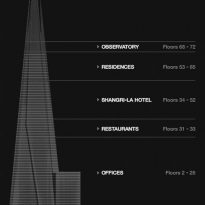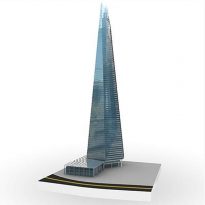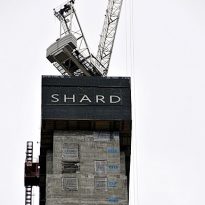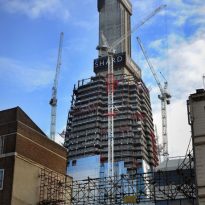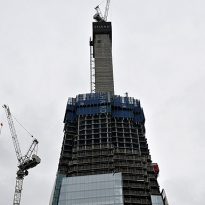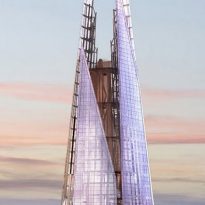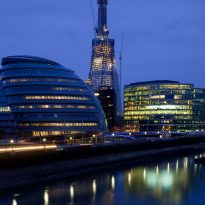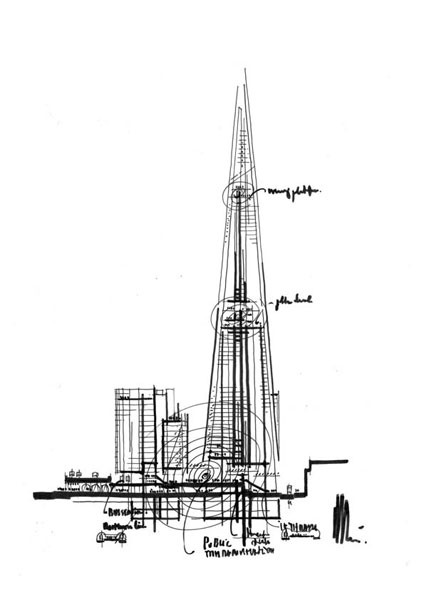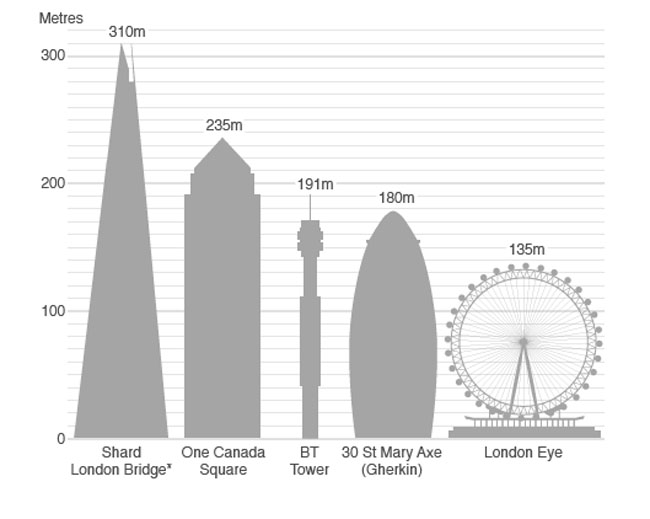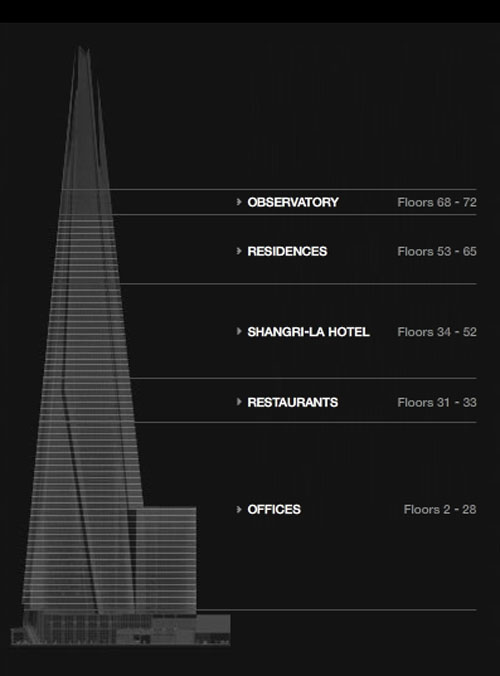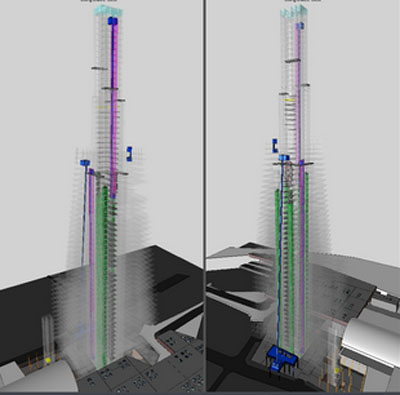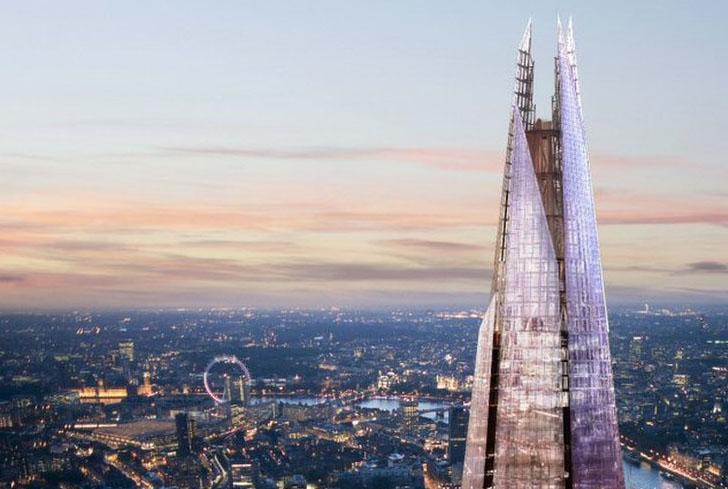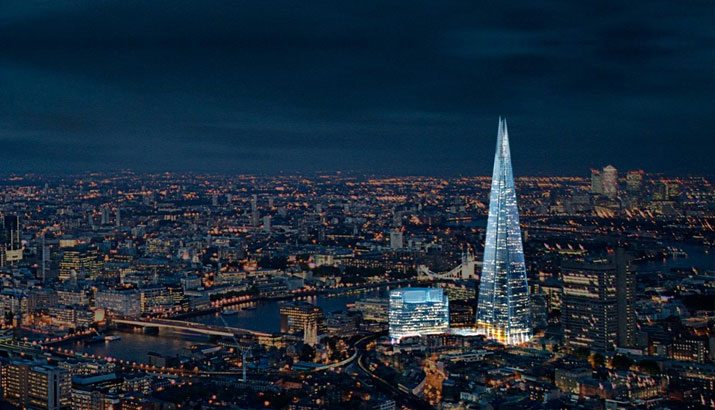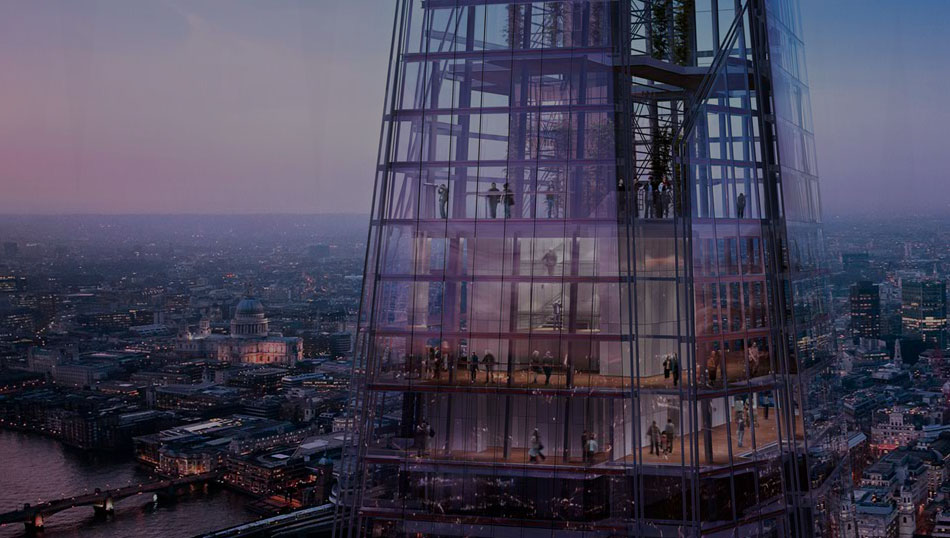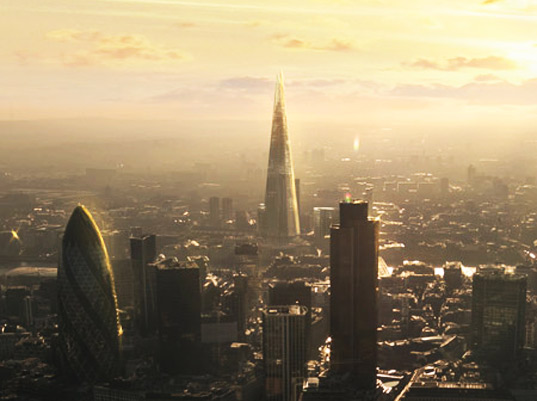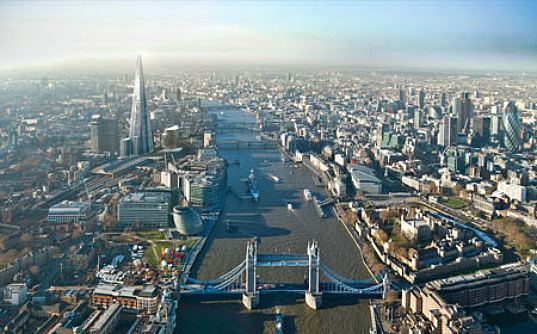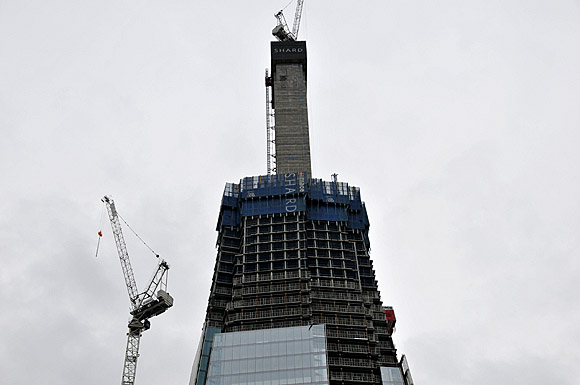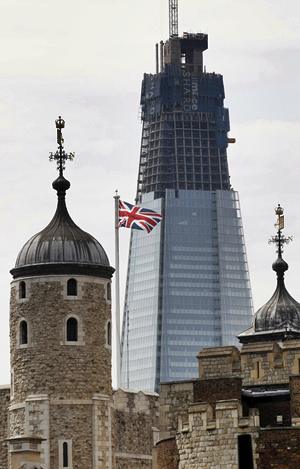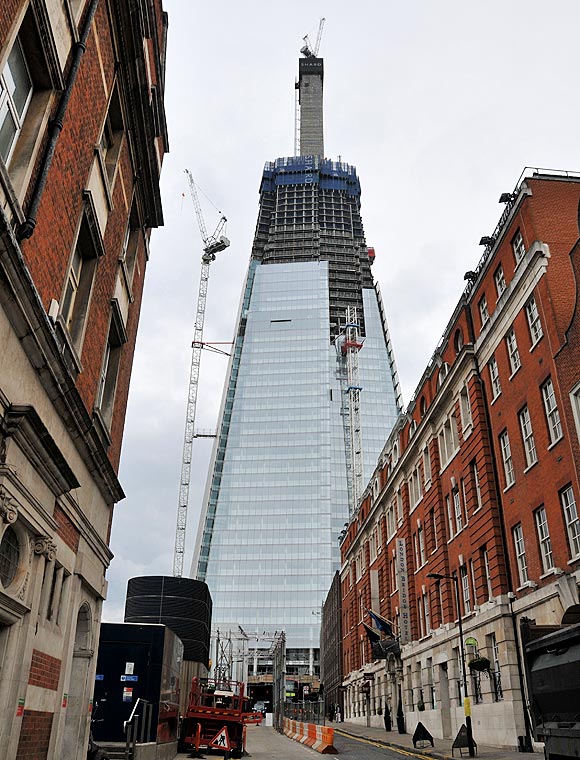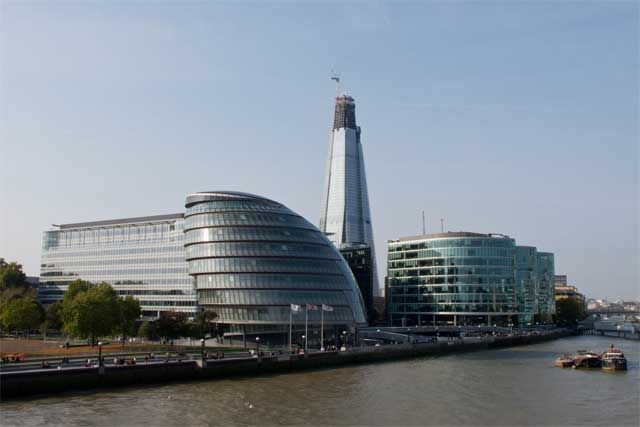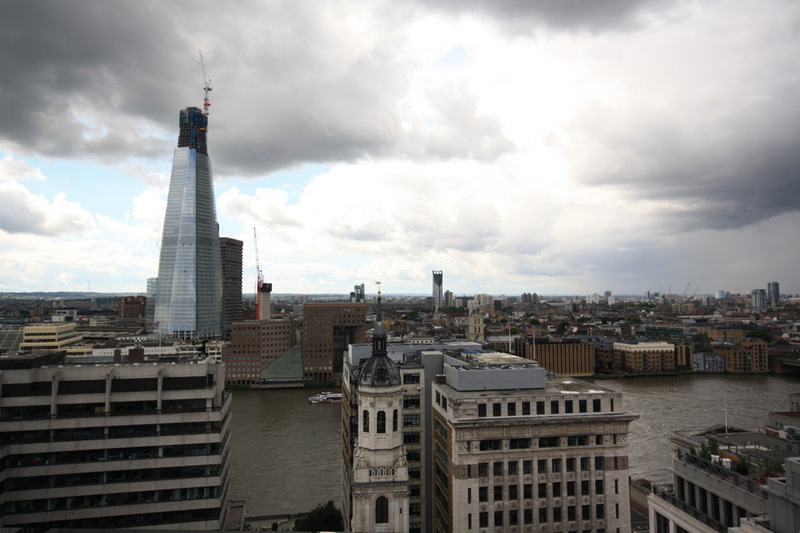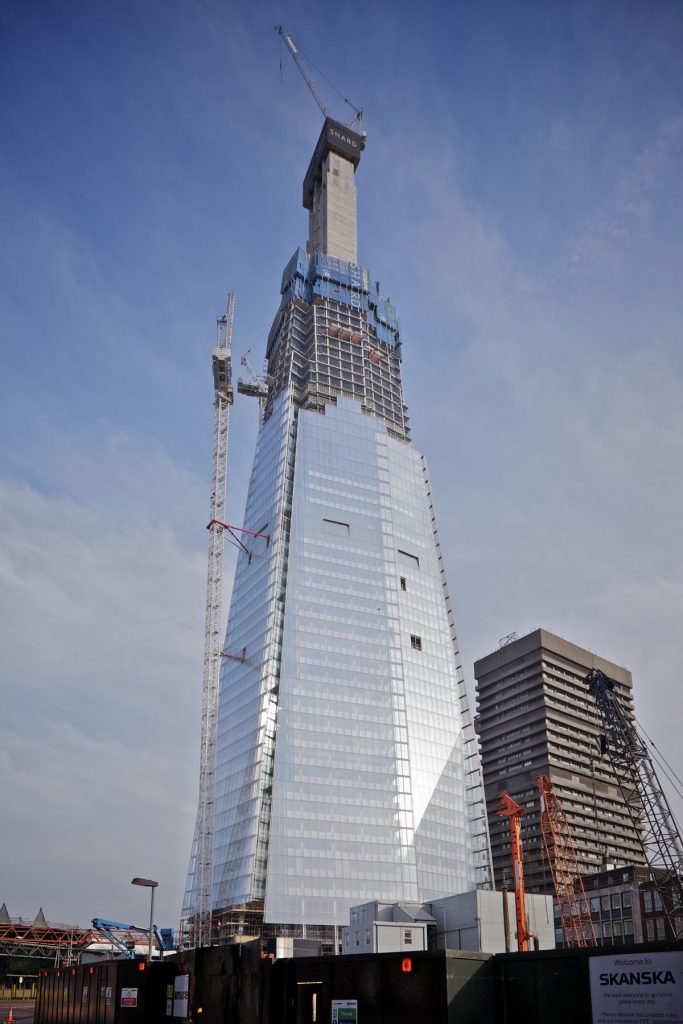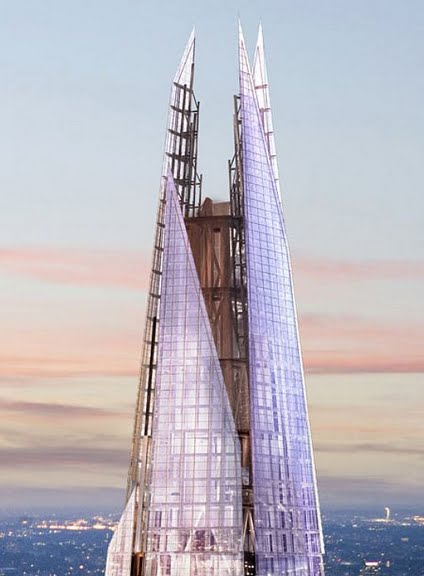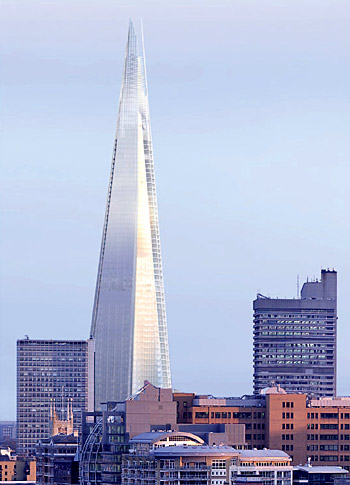Shard London Bridge

Introduction
This work of the architect Renzo Piano, also known as London Bridge Tower, or simply The Shard (The Splinter), with a cost of 714 million euros and a height of 310 meters, has become the time of its completion in the tallest building in Europe.
The building is part of a larger project, the London Bridge Quarter, and responds to the London Mayor’s policy to promote the development of new transport nodes to assist in the flow of the intense rate of public transport users in today. The other building to accompany the Shard will be a modern business center, The Place, developed by the same team.
Remodeling
The project also includes the development of the forecourt of the railway station and the bus station.
The existing roof was removed and replaced by a glass cover, local retail sales moved to open visual connections between the train station, bus and taxi.
Public sphere
Two new spaces 30x30mm form the center of the scheme. These improvements in the public sector are vital for the regeneration of this congested and neglected part of the city and is expected to serve as a catalyst for the redevelopment of the whole area.
Unlike other cities like New York or Hong Kong, The Shard is not part of an existing group of tall buildings.
Location
The mixed use building is located next to London Bridge station, on the south bank of the River Thames. Combining train station, bus and metro, it is one of the busiest in London, moving 200,000 passengers daily.
In the land occupied by the Shard London Bridge building, previously raised the Southwark Towers, demolished in 2006.
Concept
The architect wanted to reflect the heartbeat and life of [[Category:London|London]] on the glass facades of the building, which reflect the seasons or weather variations with its diversity of colors……. “form tower was determined by its importance in the skyline of the city, after the rain is blue. In the evening it will become warmer, reddish…” The building was designed to be a “vertical city, with many functions” remain alive 24 hours a day.
According to Renzo Piano, the shape and design of the building are influenced by a structure that dominated the London skyline for hundreds of years, the church towers. Continues to draw the attention of the architect’s inspiration into a work of Canaletto eighteenth called The Thames and the City, why the shape of the building is going narrowed as it ascends, ending in a kind of needle -shaped having some buildings of that era.
Construction
2009
Construction began in February 2009 with the demolition of the New London Bridge House, adjacent to the site, which is also part of the new project, instead the London Bridge Place to accompany the Shard will rise.
The first movements with the locations of beams were made in April. To raise your structure 5 cranes, four of them “jumping” to the tower as it gained height were used. In late October the structural frame and began to see concrete being poured into the northern part, to create the next place where the crane would rise.
2010
In March 2010, the concrete core was rising steadily at about 3 meters per day reaching the 33rd floor in mid-June. The first glass panel was installed in May 2010. In July 2010 the core stopped rising, having reached the 38th floor, and was reconfigured to the next stage of construction
In mid-November 2010, the third core had reached the 68th floor, about 235 meters, with floor beams reaching the 40th floor and facade covering a third of the building. In late November, he spent the 235 meters and became the tallest building in Britain.
2011
The core concrete floor 72 Shard emerged in early 2011, standing at 245 meters. The first part, in January 2011 saw the installation of hydraulic screens, used to form the concrete floors of the hotel and apartment section of the tower, and rose up to the 69th floor. On January 25 2011, the concrete pumps began to pour concrete in the floor of the plant 41. the cladding structure also progressed. In August facade cladding wrapped over half the building. Continued dumping of homes and mid August the core box core was removed. In late September, the steel structure was approaching the full height of the core, almost reaching the 244 meters.
On September 24, the last crane, the highest built in Britain so far, installed the top spire, precast and pre-assembled based on 3D models, becoming the tallest building in the European Union, surpassing the Commerzbank Tower in Frankfurt, Germany.
2012
The Shard was auctioned on March 30, 2012, with the placement of your last needle, 66 meters high, 500 tonelads. The building reached 310 meters. In reference to his height, some reports give 308.50 meters.
Since the beginning of its construction in 2009 about 1300 people have worked so he could be finished for the celebrations of the London 2012 Olympic Games
Spaces
That the public had access to such an important building in town was particularly taken into account at the time of its design.
A remodeled entrance to the London Birdge station in the lobby level, lead to a public square, where there are cafes, restaurants, a gym and a famous center of learning. The idea for the center grew out of the recognition that both Shard London Bridge will be a focal point for the local community as a business center.
The slender pyramid shape adapts to different uses intended for the building and distributed in its 56.000m2, with 72 plants enabled the public, plus another 15 for the cooling radiator. Great floors dedicated to offices in the lower part, with public areas, central hotel with 195 rooms, several restaurants and apartments on top.
Plants 2-28
In the 26 floors above the plaza will be offices, followed by a public space on three floors at an average level. This space is designed to offer spectacular views of [[Category:London|London]] as well as spaces for leisure activities, shows and exhibitions, as well as bars and restaurants.
Plants 34-52
Among the plants 37-51 is a five star hotel, the Shangri-La Hotel, with 195 rooms.
Plants 53-65
Between levels 52 to 63 residential apartments are located, some occupying the entire floor.
Ground 68-72
In recent plants open to the public, between 68-72 levels, a gazebo is located at 240 meters above street level. This plant offers a vision of up to 50 miles on a clear day.
Plants 75-87
After the observatory levels The Shard continues over 15 floors, reaching 305 meters. This area is not open to the public, the very pinnacle of the tower, is the radiator cooling the building.
Distribution
- Floor 0-1………Lobby
- Floor 2-28……. Offices
- Floor 31-33…… Restaurants
- Floor 34-52…… Hotel
- Floor 52………. Spa
- Floor 53-65…… Residential apartments
- Floor 68-72…… Gazer
- Floor 75-87…… Needle
Fractures
The spaces created between the glass panels of the double facade, called in this case “fractures” are used as meeting rooms or spaces bursting at the office or conservatories in residential homes, as they are open to the wind, receiving natural light and ventilation while providing a vital link with the external environment often denied in airtight buildings.
Structure
The main structural element is the concrete core in the center of the building, which houses the main service lifts, elevators and fire escapes, supporting all lateral and torsional loads to the building is subjected. This concrete spine also houses major systems, the steps of electrical cables, water pipes and fitted with maintenance materials.
The foundation 50 meters sinks into the ground. The builders had to work through the foundations of the previous building, with numerous holes abandoned stairs, vents and also the axes of the London Underground, while maintaining the works vibrations to an absolute minimum in the center a fully functioning city.
In the top of a concrete base, levels of offices come with structural steel frames to maximize column-free space.
In hotel rooms and residential floor plates are formed from pre-stressed concrete, which is a means to overcome the inherent weakness of concrete in tension by using tensioned steel tendons with hydraulic jacks. It is an extremely efficient technology that allows the maximum number of plants packed into the space available. The concrete is also used to absorb the noise.
At higher levels, the construction is all steel, incorporating what is called “armor hat ” system that connects the perimeter columns of the building as if it were a rope tying the top of a tent.
Materials
The Shard is a building of concrete, steel and glass.
The tapered pyramid that crowns the top of the building has a square base of steel weighing 500 tonnes, equivalent to 15 stories high, the last 15, and is made of 800 pieces of steel.
Facade
Eight “splinters” glass define shape and visual quality of the tower. The huge double ventilated façade with 36.000m2, use crystals with low iron content with a mechanical roller blind in the cavity to provide sun protection. In the coating of the walls 11,000 were used glass plates.
Many of these are solar panels on the sloping and perfectly oriented to the sun deck, creating a large area of renewable energy. The “fractures” caused by glass fragments, open to the wind, provide natural ventilation to the Winter Gardens
In soils and hydraulic concrete slabs were used.
Elevators
A total of 44 lifts, including single and dual platform, linking their names with numerous entrances from the street and from the lobby level at the station
Videos






